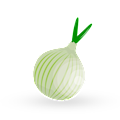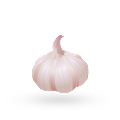MAIN INGREDIENTS
Widely regarded as an excellent hangover cure and a great remedy, khashi is a soup made by boiling beef intestines, tripe, shank, as well as other organs such as kidneys. Carrots, onions, bell peppers, and various greens may also be used. After the broth has been prepared, milk or pieces of milk-soaked bread can be added to the pot along with salt, pepper, and chopped garlic.
It is said that khashi was invented when the poor had to give away all their meat to the rich, being left only with the organs, heads, and hooves of the animals. Ever since the promotion of the soup as a particularly healthy dish, it became popular among all social classes.
MAIN INGREDIENTS
Pelamushi is a Georgian dessert made with pressed and condensed grape juice, sugar, and flour. The liquid is gradually heated until it thickens, and it is then poured into serving dishes, bowls, or various molds, in order to create attractive shapes.
When fully chilled, pelamushi is ready to be served, and it is recommended to garnish it with various nuts and seeds.
Mujuji is a traditional dish consisting of jellied pork offal such as tails, ears, and feet. The offal is combined with vinegar, vegetables, and spices such as onions, carrots, garlic, allspice, cinnamon, bay leaves, and peppercorns. This dish can be served hot or cold, and the Georgians like to serve it with a layer of chilled fat on top.
MAIN INGREDIENTS
Churchkhela is a traditional Caucasian candy that is shaped into a sausage. This candy is made by dipping a long string of nuts (usually walnut halves) in concentrated grape juice, then leaving the concoction to dry.
It is so healthy and so nutritious that, in the past, it was even carried by Georgian warriors on their long journeys. Although walnuts are usually used in the preparation of churchkhela, they can be replaced by almonds, hazelnuts, or raisins.
MAIN INGREDIENTS
Jarkhlis pkhali is a traditional dip or spread originating from Georgia. It is usually made with a combination of beetroot, walnuts, garlic, coriander, chili powder, vinegar, salt, and pepper. The walnuts and garlic are ground into a smooth paste, and it's then mixed with the coriander, vinegar, chili powder, and boiled grated beetroot.
The mixture is brought together into a thick and smooth paste that's served on platters and often garnished with dill and coriander. Jarkhlis pkhali is served cold or at room temperature.
OTHER VARIATIONS OF Pkhali
MAIN INGREDIENTS
Tklapi is a unique Georgian dessert consisting of cooked fruit puree that is poured on a tray in a very thin layer and left to dry in the sun for a few days. It is typically prepared with fruits such as wild plums, pears, mulberry, figs, or apples.
Visually, this healthy treat looks like a piece of leather. Tklapi can be consumed on its own or used in soups and stews.
MAIN INGREDIENTS
Ghomi is a traditional dish from Georgia consisting of coarse and fine cornflour combined with water. If the pieces of cheese such as sulguni are placed in the hot porridge to melt before consumption, the dish is called elarji. Ghomi is often served with different sauces on the side, such as tkemali or bazhe.
VARIATIONS OF Ghomi
MAIN INGREDIENTS
Chvishtari is a traditional cornbread originating from Svaneti. It's usually made with a combination of cornflour, milk, eggs, oil, salt, and sulguni cheese. The dough is kneaded with the cheese until it becomes firm and smooth. It is then flattened and cooked on both sides in a greased frying pan over medium heat until lightly golden.
It's recommended to eat chivshtari on the same day that it was made, preferably while still hot.
MAIN INGREDIENTS
Buglama is a popular Azerbaijani and Georgian dish consisting of lamb pieces that are stewed with onions, tomatoes, peppers, a variety of spices including black pepper and bay leaves, and a small amount of liquid. The name of the dish means steamed, referring to the fact that the lamb is cooked in its own juices.
Although lamb is the most common option, it is not unusual to prepare buglama with fish.
TasteAtlas food rankings are based on the ratings of the TasteAtlas audience, with a series of mechanisms that recognize real users and that ignore bot, nationalist or local patriotic ratings, and give additional value to the ratings of users that the system recognizes as knowledgeable. For the “14 Worst Rated Georgian Foods” list until March 27, 2025, 10,196 ratings were recorded, of which 3,477 were recognized by the system as legitimate. TasteAtlas Rankings should not be seen as the final global conclusion about food. Their purpose is to promote excellent local foods, instill pride in traditional dishes, and arouse curiosity about dishes you haven’t tried.









